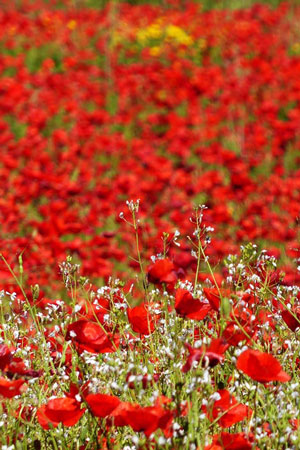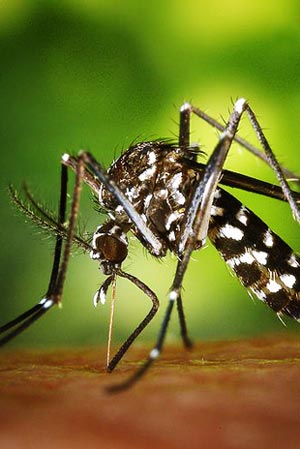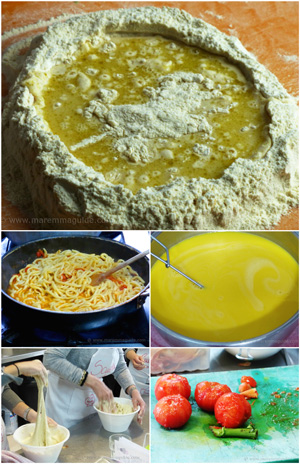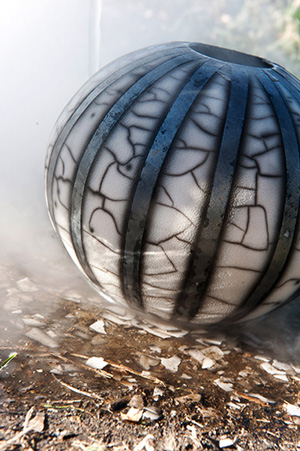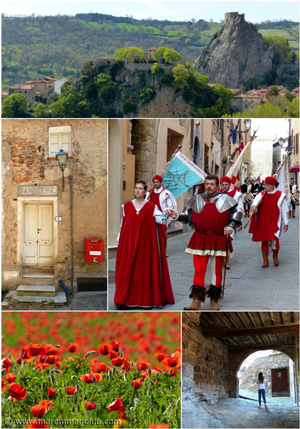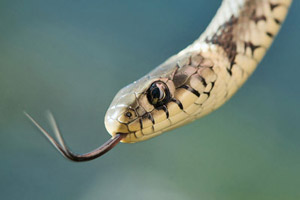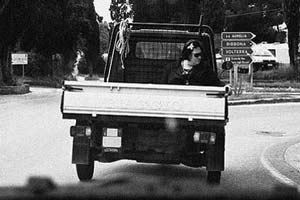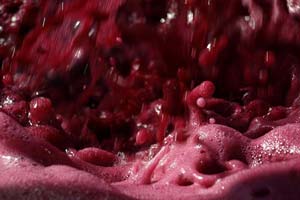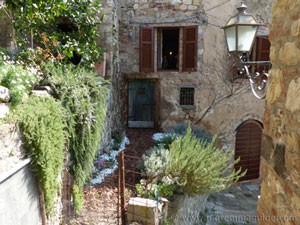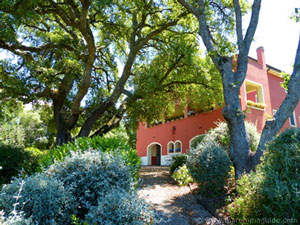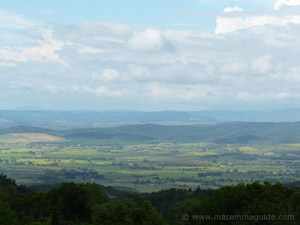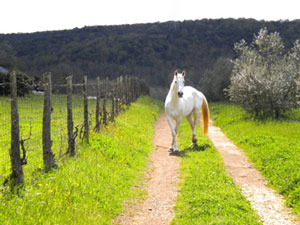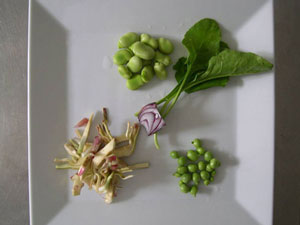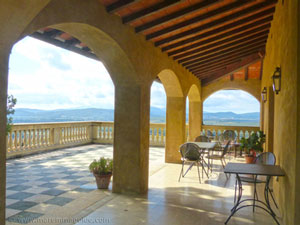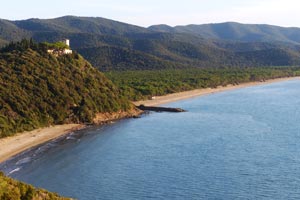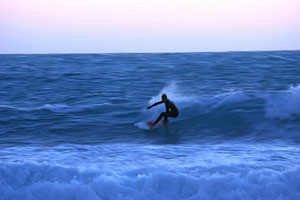Maremma Tuscany
Wild Boar Facts
All you ever wanted to know about wild boar
and more!
Looking for wild boar facts? The wild and untamed countryside of Maremma in Tuscany and Lazio is home to many wild boar some of whom root for food right down to the edge of the pine woods along Maremma's spectacular beaches.
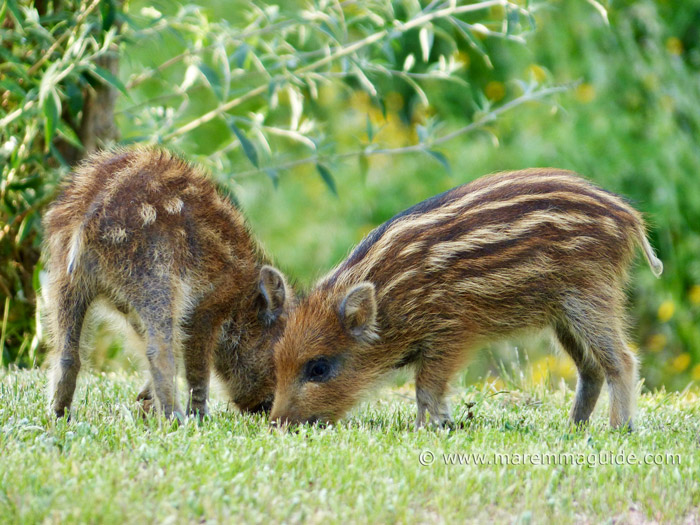
Here you will find 175 facts about these Italian wild boar, the majority of which also apply to all wild boar.
On this page you will find wild boar information about:
- names and terminology
- scientific classification
- taxonomy
- conservation status
- distribution
- description: dimensions, appearance - hooves, tail, head, teeth and tusks, skin and coat.
- habits: lairs, groups, territories, communication, temperament, hygiene, and
- feeding.
- reproduction: mating habits, piglets, lifespan
- predators
- relationship with man
- heraldry
- hunting
- commercial uses, and
- wild boar in the Italian kitchen.
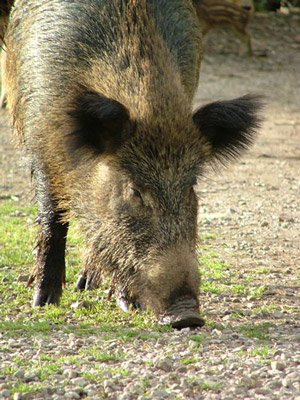
Wild Boar Pictures
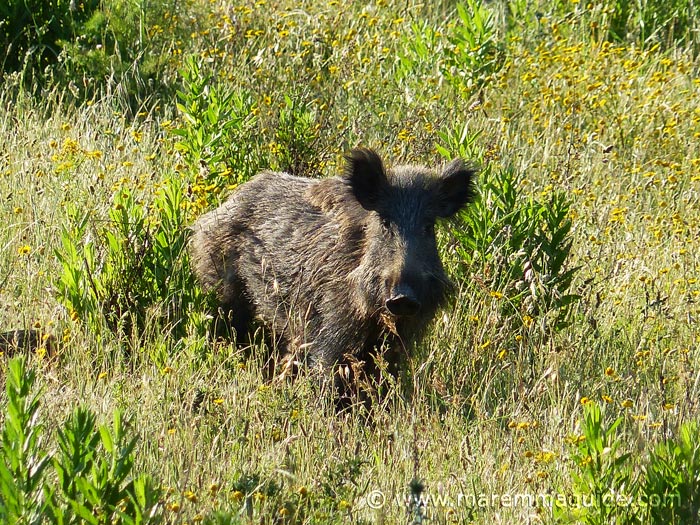
If you take a drive in Maremma's hills or through her countryside during early evening you will more than likely see boar along the route - if not also "caprioli" (deer), and porcupine ("istrice") procupine - and be able to take your own pictures of wild boar.
NOTE: I would highly recommend that you drive at a slower than perhaps normal pace - it is Italy after all anyway! - and continously scan either side of the road. Maremma's boar can reach up to 150 kg in weight and even an average sized animal will wreak your car if you are unfortunate enough to collide with one.
My pictures of wild boar on this and the following page were taken in a tiny hamlet in Maremma called Montioni where it is possible to meet wild boars close-up.
Wild Boar Facts
Names and terminology
1. Although the term boar is used to denote the adult male of certain species, for wild boar it applies to the whole species, including the females and piglets.
2. The Italian for wild boar is "cinghiale", although it is also known by other names.
3. The term "solengo" refers to an adult male "cinghiale" that usually exceed 70-80 kg in weight, lives a solitary existence and only approaches female boars at mating time.
They are very much sought by hunters for the trophy of their sharp tucks, but make extremely dangerous adversaries for the mute beating dogs used in the hunt.
4. The term "nero" refers to a "cinghiale" of which the sex is unknown and which weighs more than 60 kg when alive.
5. The term "porcastro" is a typical expression of hunters indicating a "cinghiale" that has a weight less than 60 kg when disemboweled.
6. The same term is used in the north of Italy in the besciano dialect until Piemonte, to indicate the offspring of a male "cinghiale" with a feminine domestic pig.
7. Italy has many dialects: some other terms for "cinghiale" are:
| Region | Name |
| Calabria | Cignàli |
| Campania | cignàle |
| Lazio | cignale |
| Piemonte | cinghial, pòrs sarvaj, tasson-pòrs, tasson-crin |
| Sardegna | sirbone, sirboni, porcrabu, polcrabu, sibròne |
Wild Boar Facts: Scientific Classification
8. The wild boar is a mammal of the Family Suidae and the wild ancestor of the domestic pig.
The full scientific classification is:
| Kingdom: | Animalia |
| Sub-kingdom: | Eumetazoa |
| Superphylum: | Deuteostomia |
| Phylum: | Chordata |
| Sub-phylum: | Vertebrata |
| Super-class: | Gnathostomata |
| Class: | Mammalia |
| Order: | Artiodactyla |
| Sub-order: | Suiformes |
| Family: | Suidae |
| Genus: | Sus |
| Species: | S. scrofa |
Binomial name: Sus scrofa
Linnaeus, 1758
9. Maremman wild boar - the Sub-species Sus scrofa majori - are one of the original sub-species to have existed in Italy and are now found throughout central Italy. It is smaller than scrofa but proportionately has a larger and wider skull.
10. In Sardinia the Sub-species is Sus scofa meridonalis a small Sub-species, probably the result of breeding between pigs introduced on the island by man for domestication.
Wild Boar Facts: Taxonomy
11. Originally the taxonomy of wild boar was determined by the relative forms and lengths of their lacrimal bones ("canali lacrimali").
12. Maremman wild boar, as with other European sub-species, have longer lacrimal bones than the Asian sub-species.
13. With the advent of mitochondrial DNA (mtDNA) analysis the taxonomy has been revised from thirty-one subspecies (including the common pig) to sixteen subspecies, unofficially sub-divided into four race or breed groups.
14. The sixteen subspecies comprise:
* Sus scrofa algira Loche, 1867
* Sus scrofa attila Thomas, 1912
* Sus scrofa cristatus Wagner, 1839
* Sus scrofa davidi Groves, 1981
* Sus scrofa leucomystax Temminck, 1842
* Sus scrofa libycus Gray, 1868
* Sus scrofa majori De Beaux e Festa, 1927
* Sus scrofa meridionalis Major, 1882
* Sus scrofa moupinensis Milne-Edwards, 1871
* Sus scrofa nigripes Blanford, 1875
* Sus scrofa riukiuanus Kuroda, 1924
* Sus scrofa scrofa Linneo, 1758
* Sus scrofa sibiricus Staffe, 1922
* Sus scrofa taivanus Swinhoe, 1863
* Sus scrofa ussuricus Heude, 1888
* Sus scrofa vittatus Boie, 1828
15. And the four unofficial groups:
* Indian
* Indonesian
* Western
* Oriental
16. There are chromosomal differences between these races: European wild boar with the exclusion of Spanish, French and Sardinian wild boar, posses 38 chromosomes. The same number of chromosomes as domestic pigs.
Whereas Spanish, French, Sardinian, Indian, Indonesian, and Oriental wild boar posses 36 chromosomes.
17. Boars with 36 and 38 chromosomes can successfully mate producing fertile offspring with 37 chromosomes.
Wild Boar Facts: Conservation Status
18. Although during the course of the last thousand years the wild boar population has been decimated several times, due to reintroduction and moreover its resitance and adaptability as a species, its conservation status is now considered to be of least concern.
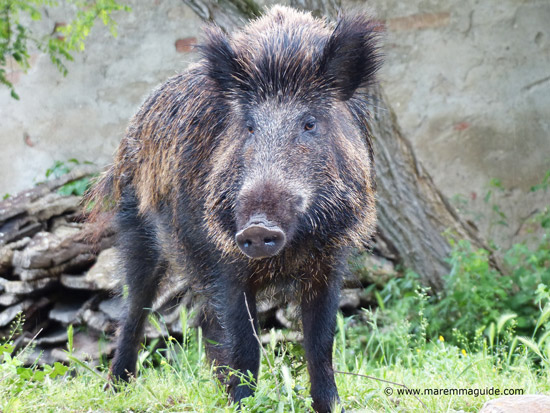
Wild Boar Facts: Distribution
19. Wild boar originated in Eurasia and North Africa.
20. Largely decimated by 1900 from hunting, wild boar in Italy now may be found discontinuosly from the Valle d'Aosta to Calabria, in Sardinia, Sicily, the Island of Elba and other small islands. In the latter case having recently been been introduced by man.
Less numerous populations may be found in the pre-Alpine regions and on the "monti" di Lombardia, Veneto, Trentino and Fruili.
21. The original sub-species of wild boar living in Italy were the Sus scrofa majori of Maremma, Sus scorfa meridonalis in Sardegna (Sardinia) and other now extinct sub-species diffusely spread in northern Italy.
22. The Sardinian sub-species, however, is genetically distinct from its continental "cousins", originating from semi-domestic pigs imported by man to the island in ancient times.
23. Habitat wise, wild boar prefer mature oak woods - of which Maremma is largely covered. But they are very adaptable in terms of habit and will colonize practically every type of environment with the exception of desert areas where water is scarce, and high mountainous rocky regions where snow is prevalent and where it is too hard to root for food.
Wild Boar Facts: Description
Wild Boar Facts: Wild Boar Dimensions
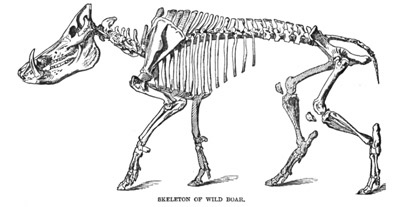 |
Wild Boar Skeleton |
24. The average weight of wild boar varies depending upon sub-species, with a tendency for their weight to increase the further south-east and north-east across their native Eurasian geographical range that they are found.
25. In the Italian Alps the weight of the "neri" - black, grey-black adult boar ranges between 100 kg and 200 kg. Whereas in he centre of Italy, the average weight is between 80-90 kg. In rarer cases reaching up to 150 kg.
26. Wild boars shot in Tuscany have had recorded weights of 150 kg (331 lb).
27. For comparison, the average weight of the species as a whole is between 50-90 kg. With Spanish boar rarely exceeding 80 kg, and Romanian and Russian boars known to reach wieghts of 300 kg (661 lb).
28. Male boar are larger and heavier than female boar.
Wild Boar Facts: Wild Boar Appearance
29. The wild boar has a solid constitution, with a square body and short and rather thin legs.
Wild Boar Facts: Wild Boar Hooves
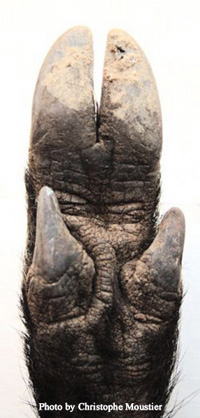
30. Every foot is equipped with four hooves ("zoccoli").
31. The two front ones are larger and more sturdy than the rear and rest directly upon the land.
32. The two lateral ones are shorter and only come into contact with land when the boar walks on ground that is soft ("soffici") or muddy (fangosi").
In these circumstances, the boars hooves offer the animal a better distribution of weight and help prevent it sinking.
34. Notwithstanding its small feet, wild boar can move rather fast, usually at a trot.
35. But they can also gallop for short distances, for eaxmple when charging or escaping danger.
Wild Boar Facts: Wild Boar Tail
36. The wild boar tail ("coda") is pendulous, hanging down from its body, and can measure up to 40 cm in length.
37. It is entirely covered in bristle ("setole"), forming a small quiff ("ciuffetto") at its tip.
38. Note! The boar nervously shakes its tail when it is when it is annoyed or irritated.
Wild Boar Facts: The Wild Boar Head
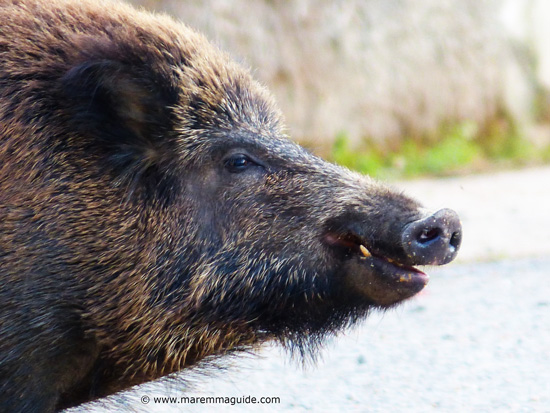
39. The head ("testa") of a wild boar is large and solid with a long muzzle ("muso") that ends with a cartilaginous snout ("grugno").
40. The snout rests upon a muscular disc which enables the animal to move it with great mobility and precision.
41. It is also rich in nerves providing the boar with great sensitivity.
42. The snout is attached to the muzzle by virtue of a very long pre-nasal bone, the "fognaiuolo".
43. The forehead, especially in old male boar, is practically perpendicular to the rest of the muzzle.
44. The boars neck ("collo") is short and stocky. In the winter months, when the animal is covered with thicker hair, it can appear to be completely absent with the head looking as though it rests directly upon its torso.
45. The boars eyes are rather small and are positioned laterally on either side of the skull which gives the animal the widest scope of vision possible and makes it difficult to surprise him.
46. The boars sight is weak however compared to its senses of smell and sound.
Wild Boar Facts: Wild Boar Tusks and Teeth
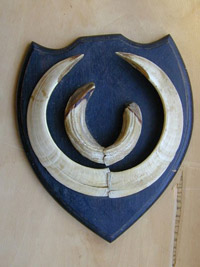 |
Wild Boar Tusks |
47. The wild boar has 44 teeth which reveal its opportunistic feeding habits. They comprise of twelve incisors, four canines, sixteen premolars and twelve molars.
48. The incisors and premolars tend to fall out with age.
49. The molars have a flattened form and serve to crush food.
50. It is the canines, however, that are the main characteristic of wild boar. Often referred to as tusks ("zanne"), the canine teeth are present in both sexes and continue to grow throughout the animals life.
51. It is only in the male wild boar, however, that they reach sufficient proportions to protrude outside of the animals mouth, curving upwards.
52. It is the inferior canines that are the proper tusks. Larger than the superior canines, they are deeply buried within the animals jaw and can reach in exceptional cases up to 30 cm in length.
53. Normal lengths are between 15 cm and 20 cm, with less than half of this length visibly protruding from the boars mouth.
54. The wild boar dental set:
Molar |
Premolar |
Canines |
Incisors |
Incisors |
Canines |
Premolar |
Molar |
3 |
4 |
1 |
3 |
3 |
1 |
4 |
3 |
3 |
4 |
1 |
3 |
3 |
1 |
4 |
3 |
55. In the female boar the inferior canines always measure less than 10 cm. The the superior canines are also small and turn downwards.
56. Only in the older female boar is there a tendency for the inferior canines - the tusks - to curve upwards.
57. The combination of rubbing between superior and inferior canines and between superior canines and inferior incisors maintains the tusks raser sharp.
58. For the boar, their tusks serve two purposes. The animal uses them like tools, for example in digging the earth and rooting whilst rooting for food.
And as defensive and offensive instruments in defending themselves against predators, or competing with other males during the mating season.
Wild Boar Facts: Wild Boar Skin and Coat
59. The skin of wild boar is very thick, with pads of subcutaneuos adipose tissue but very little blood supply. It is in effect an armour virtually rendering the boar immune to insect or viper bites (unless attacked in more vulnerable points), or punctures from spiney plants within the woods in which it lives.
60. The boar is nearly completely covered (with the exception of parts of the head and the lower parts of the legs) with rigid bristles.
61. These bristles, mixed with a finer and softer fur undercoat, enable the animal to thermally isolate its body from external temperatures.
62. On the forehead and shoulders the boars mantle forms a type of mane, more evident on some sub-species than others.
63. When the animal is irritated or frightened the mane becomes straightened, rendering the appearance of the boar larger and more solid than reality.
64. The boars winter coat is thick ("folto") and dark in colour.
65. During the spring months the majority of the undercoat and bristles are shed and the boar takes on a lighter colour.
66. The general colour of a boars coat varies according to population and region. The colour ranges from tawny-brown to grey-black.
67. Whitish, although not albino, boar have been known to occur in central Asia. In western Russia ther are many red boar, and in Manchuria there are many examples of nearly black boar.
68. Very rarely (about three boar in every 100 years) adult boars with large and dark mantles are recorded. Such boar are mutations from the more recent crossing of boar with domestic pigs.
Wild Boar Facts: Habits
Wild Boar Facts: Wild Boar Lairs
69. Wild boar have a twilight and nocturnal habit, foraging from dusk until dawn interspersed with resting periods.
70. During the day they find shelter in holes in the earth between bushes that they excavate using their muzzles and the hooves ("gli zoccoli").
71. Thet are the only hoofed animals known to dig burrows.
72. These enlarge with use and during the winter become stuffed thick with branches and dry leaves.
73. Numerous rest points may be found along the course of the boars nocturnal runs, connecting their foragging areas and drinking troughs with their main lairs.
74. Some individuals have been observed tearing tall grasses and canes in order to form shelters between low branches and bushes.
Wild Boar Facts: Wild Boar Groups
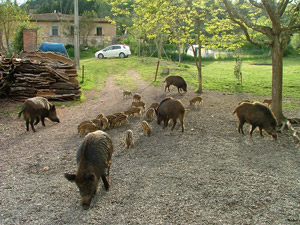
75. Boar are social animals and live in groups called "sounders".
76. The sounders typically contain twenty of so animals, comprising adult females and their litters under the leadership of the oldest wild boar sow of the group.
77. In areas with plentiful food supply, it is possible to find groups of fifty or more boar.
78. Older adult male boars are not part of the sounder outside of a breeding cycle and tend to lead a solitary life for the majority of the year.
79. Young males who have not yet mated tend to gather together in groups.
Wild Boar Facts: Wild Boar Territories
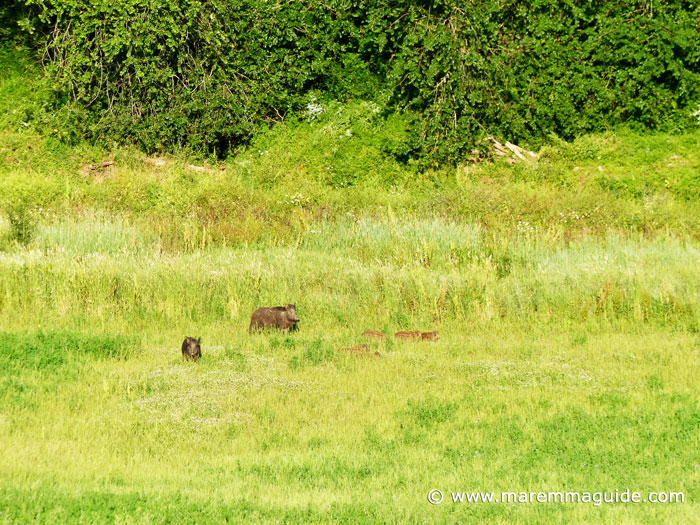
80. Each group of boar has their own territory that covers an area of twenty or so square kilometres.
81. The boar mark the delineation of their territory with odorous secretions from the lips and anal zones.
82. The territories of the males are usually larger than those of the females, reaching twice the size.
83. Generally a wild boar group remains in the same territory, abandoning it only if food supplies become insufficient to sustain it in search of areas richer in food. This explains the unexpected presence of boar in areas where historically their presence would not have been contemplated. For example, the suburbs of Milan!
84. The presence of water within their territories is of fundamental importance to boar and they never stray far. A fact well known and utilised by man in the hunting and traping of these animals.
Wild Boar Facts: Wild Boar Communication
85. Wild boar communicate between themselves through the use of a vast range of sounds that comprise a series of grunts ("grugnuti") of various frequencies, and shrieks and roars.
86. These sounds are thought to be used to convey territorial ownership of a group, in mating and combat.
87. They are accompanied by communication through the animals sense of smell using body odours and glandular secretions.
Wild Boar Facts: Wild Boar Temperament
88. Wild boar are famous for their aggresive temperament. If surprised or cornered, a boar (particularly a sow with her piglets) will defend itself with and its young intense vigor. Even if hurt or debilitated they will attack without a second thought, fighting courageously.
89. The difference between the form of the tusks between the two sexes leads to a different reaction when confronted with danger. Male boar lower their head, charge and then slash upwards with their tusks.
90. Female boar, whose tusks are not visible, chrage with their heads up mouths wide open, and repeatedly bite their aggressors.
91. Although wild boar attacks are rarely fatal for their large predators, such as the bear, they often leave permanent reminders in the form of scars and mutilations.
Wild Boar Facts: Wild Boar Hygiene
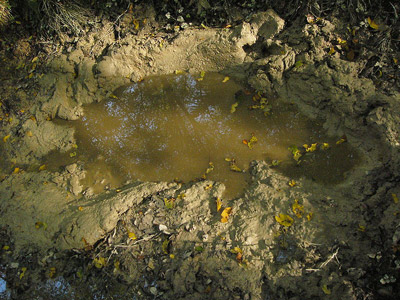 Wild Boar mud pool
Wild Boar mud pool
92. Notwithstanding popular belief that wild boar are dirty animals, they keep themselves very clean.
93. Their habit of rolling in mud serves a variety of functions. It refreshes the animals body during the hot summer months, and the mud covering it gathers protects it from scorching from the suns rays.
94. It serves to heal numerous wounds, minor and serious, that the animal has procured from moving around in the spiny underbush or in combat.
95. And to protect against various parasites.
96. In order to scrape off dried mud from its back, boar periodically rubs against vertical objects such as trees (especially red oaks and firs).
97. In the absence of pools of water the boar will shift soil with its snout and urinate in the depression, rolling within the resultant paste.
98. Sometimes a group will practice a kind of grooming, smoothing down each others back fur with their tongues and snouts.
Wild Boar Facts: Feeding
Wild Boar Facts: What do wild boars eat?
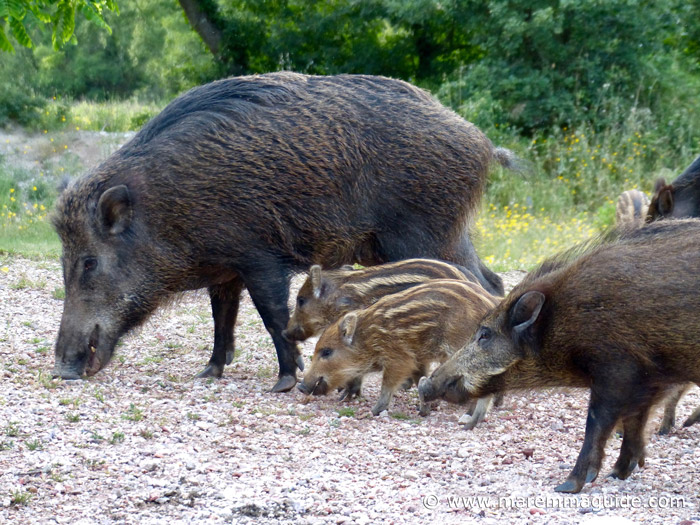
99. Wild boar are omnivorous ("onnivoro"), but mainly eat vegetable matter, such as grass, acorns, nuts, fruit, berries, tubers, roots, and mushrooms. And refuse! In fact, in fact almost anything that they come across!
100. When acorns are particularly plentiful, however, the boar will choose to eat very little else!
101. Their stomachs only comprise of two compartments, unlike the three of sheep or the four of ruminants.
102. Occasionally they will eat insects and small reptiles, eggs and sometimes meat and fish. The latter mainly having been unearthed or found in pools of water.
103. And every now and then they will actively hunt, not only choosing small victims such as frogs or snakes, but also fawns and lambs.
104. Their very fine sense of smell enables them to sniff out food, including that located underground.
Wild Boar Life History & Reproduction
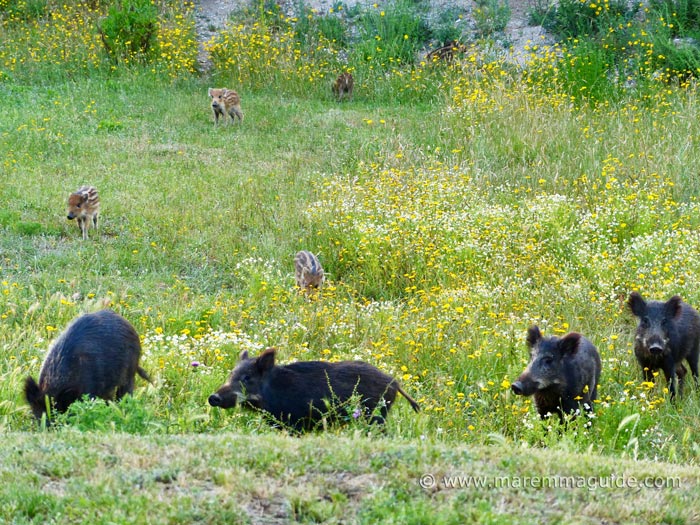
105. Depending upon the climate and availability of food, the female boar will have one to three breeding cycles per year.
106. In Italy, the births are concentrated from the end of spring to the end of summer.
107. Female boar tend to synchronize their cycles in such a way as to raise litters of the same age together and, hence, maximise the possibility of their survival.
Wild Boar Facts: Wild boar mating habits
108. During the mating season, male boar abandon their solitary life and join the sounders. They often cover long distances without stopping for food or rest in order to reach the sounder as soon as possible. No forward planning then!
109. The first thing a male boar does upon joining the sounder is to remove the young offspring still living with their mothers.
110. The presence of numerous males within the group generates tensions that are often resolved in violent combat.
111. During this period the male boar develops an "armour" of cutenaneous and adipose thickening that covers the shoulders until the height of the last rib.
112. When in combat the male boar butt head against head, parrying the blows with their "armour". This does not, however, prevent the procurement of all lesions, including serious ones.
113. Before this real combat begins, male boar complete a series of ritual face to face threats with the spraying of urine, the scraping of the ground, the violent knocking of teeth and the frothing of saliva to intimidate their adversaries.
114. Only if this ritual doesn't discourage one of the boar, does combat begin.
115. The winner then commences courtship of the females in the sounder by following the nearest female and emitting a sound similar to the rumble of an internal combustion engine.
116. When he reaches her he starts to massage her back and flanks with his snout, emitting at the same time rhythmical sounds. The female, when ready to couple, becomes immobile, appears hypnotized, and allows the male to mount her. The coupling lasts about five minutes.
117. The male boar then repeats the whole courtship ritual with other females within the group - up to eight for the stronger and more vigorous males - until the females breeding cycle comes to an end.
At which point he abandons the group until the next time and returns to his solitary life.
118. The gestation period for the wild boar is up to five months. In Italy, popular expression describes the gestation period as "tre mesi, tre settimane, e tre giorni" - three months, three weeks, and three days.
119. When the female is near to giving birth - called "farrowing" - she isolates herself from the rest of the sounder to construct a lair within thick vegetation, similar to those constructed as resting places for the night.
120. The females lair often have openings to the south so as to aid heating of the lair from the suns rays.
Wild Boar Facts: Wild boar piglets
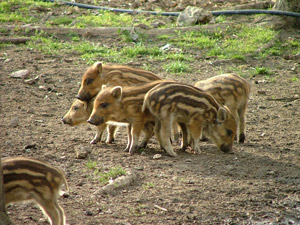
121. It is here that the wild boar piglets are born: varying in number from three to twelve per litter.
122. Upon birth the piglets eyes are open and they scrable to find one of the mothers twelve nipples.
123. The coat of the piglets is brownish or reddish/ruddy, with four or five horizontal stripes of between white and beige, and further striations along their shoulders and posterior.
124. This colouring provides the young with a good camouflage as it perfectly mimics that of the woodland undergrowth and blankets of dead leaves.
125. The arrangement of the wild boar piglets stripes varies from piglet to piglet and so it is possible to recognise individual young within a litter.
126. The stripes fade by the time the piglet is about half-grown, when the animal takes on the adult's grey or brown colouring.
127. During the first week after giving birth, the female boar very rarely leaves the lair and litter. If she does so, she covers the piglets with branches and leaves.
128. Female boar are extremely protective towards their young and during the development of the litter will attack any intruder who could represent a threat to them. It is particularly dangerous, therefore, to walk through woods known to be home to "cinghiale" during the breeding season.
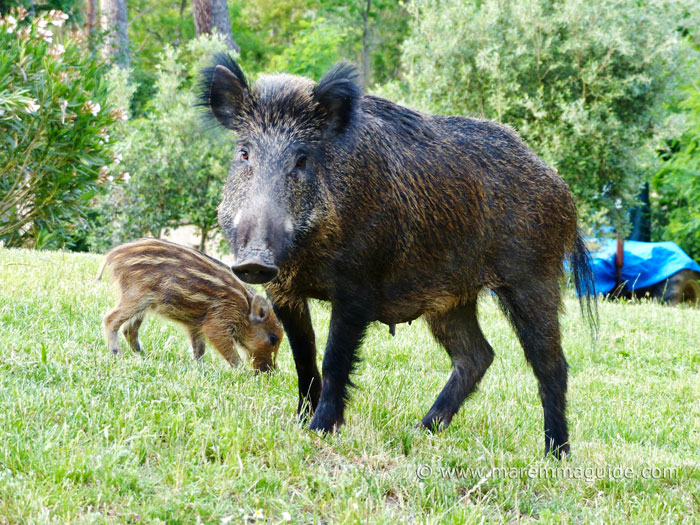
129. At a week old the piglets are able to follow their mother outside of the lair, returning only at night.
130. At two weeks old, the piglets begin to root for and eat solid food. They continue to suckle, however, until they reach three months of age.
131. Weaning is completed only after the four months and it is only then that the female re-joins the sounder with her young. It is also at four months that the piglets loose their immature coloring and take on the colouring of young adults.
132. Wild boar piglets become independent at seven months old, but tend to remain with their mother until about a year old when they are driven away by the adult males at the next breeding cycle (if not beforehand).
133. Female boar become sexually mature at around a year and a half of age, whilst male boar do so later at around two years old.
134. It is rare, however, for a young male to mate for the first time before the age of five due to competition from older males.
Wild Boar Facts: Life span of wild boars
135. Wild boars live for about ten years, but can reaches ages of up to thirty years.
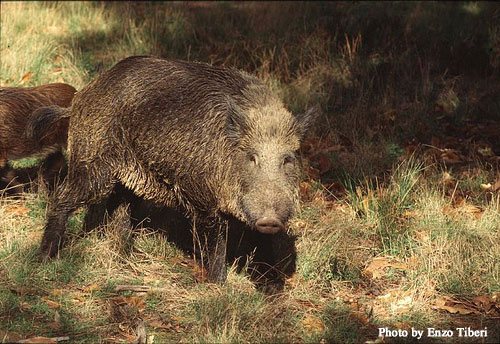
Wild Boar Facts: Predators
136. Wild boar are large and strong animals that do not hesitate to attack first if disturbed. For this reason alone it is quite rare that a predator will choose to hunt a boar over other animals less challenging to catch.
137. The principle predator for boar is man.
138. Tigers hunt boar, but there are none in Maremma!
139. However, Maremma does have wolves which are a formidible predator for boar. Although wolves more usually feed upon piglets temporarily left unattended, some populations (Italian, Siberian and Spanish) habitally also hunt adult boar.
140. The wolves method of hunting boar is rarely directly as the likelihood of a wolf being slaughtered by the boar before it is overcome by other wolves is too high. Rather a wolf will attack the boars shoulders whilst another is distracting it, and then the soft unprotected flesh of the perineum until the animal bleed to death.
141. The hunting of boar by wolves has led to boar being more aggresive when confronted by dogs.
142. Other occasional predators are large bear (who tend to pray upon boar in the run up to winter when they need to increase their energy stores), the striped hyena (but only the sub-species of considerable size with any success) and adult crocodiles.
I was going to add that there are none of these animals in Maremma, but there is a tale of a large crocodile in a lake near Massa Marittima!
Wild Boar Facts: Hunting Wild Boar
143. Since the Mesolithic age, man has actively hunted wild boar for food.
144. The invention of the arrow significantly reduced the dangers of hunting these animals.
145. In ancient Roman society and during the middle ages, the hunting of "cinghiale" for food was a daily occurence.
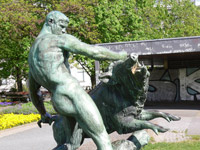 |
Wild Boar Bronze Statue |
146. To kill a large male boar was considered as a test of courage, since the boar if wounded became extremely dangerous.
In Italy in the year 799, the killing of a boar with a lance by a Carlo Magno was a feat highly regarded and recorded by Pope Leone III.
147. Wild boar hunting was laterly undertaken on horse-back with the use of large dogs wearing wide iron collars to protect them from the bites of the boar. Some of the collars extended also covered the head or torso of the dog.
148. The function of these hunting dogs was to tire out the boar, biting and chasing it until exhausted the boar collapsed in a position where the hunter could finish the kill from a distance.
149. The development of the firearm rendered the hunting of boar much less dangerous and nobles of the period killed boar in their hundreds.
150. This, together with the continued hunting of boar by local populations for food - even though it was prohibited by law - led to the decimation of wild boar numbers in large parts of Europe.
151. At the present time in industrialized countries, the hunting of wild boar is now a sport or hobby.
152. In Maremma and wider Tuscany, wild boar hunting is regulated and undertaken by hunters, "cacciatore", in groups. It is a very popular sport, but not without its inherent dangers. Accidental shootings during hunting trips are reported every year.
Wild Boar Facts: Relationship with man
153. In their native woodland environment, the continuous rootings of wild boars in the superficial layer of the woodland floor is of benefit to the woodland. It contributes to the aeration of the earth and the lessening of the presence of the lavae of harmful insects and seed burial. Thus preserving the development of the woodland mantle.
154. A reduction by man of this woodland habitat, however, has forced the concentration in restricted areas of a large number of wild boar. This has led in the longer term to the destruction of the arboreal cover through the boars consumtion of a higher proportion of seeds and young plants within an area than would otherwise have been the case.
155. A link has also been demonstrated between the forced concentraton of these animals and the lessening of the presence of deer and fowl, such as the red pellet and pheasant.
156. In areas in which wild boar have been deliberately introduced, over time their considerable numbers have supplanted other species of pig, devastated the forest areas with their continuous excavations, and caused a significant decline in the numbers of species of reptiles, amphibians and terrestrial birds through the consumption of their eggs.
157. For this reason, in many areas in which the boar has been introduced, they are periodically hunted in order to drastically reduce their number.
158. In cases where the wild boar habitat is confined by rural areas, the boar will not hesitate during the night to leave the cover of the woodland to venture into agricultural land. Here they cause considerable damage to crops and the farm land with their rootings for food.
159. In areas of considerable demographic pressure, the wild boar will leave the woodlands in nocturnal sorties into peripheral city areas and rubbish dumps where they will feed upon waste organic material and can cause damage to vehicles in the area.
Wild Boar Facts: Wild Boar Heraldry
160. Wild boar may be commonly found in heraldry, where their representation is considered to be a reflection of their positive qualities: courage and fierceness in battle.
161. Its presence may be found in coats of arms in both northern and southern Italy. It is the symbol of the city of Benevento and l'Abruzzo Citra.
162. It is also a long-standing symbol of the city of Milan. In Andrea Alciato's Emblemata (1584), beneath a woodcut of the first raising of Milan's city walls, a boar is seen lifted from the excavation. The foundation of Milan is credited to two celtic peoples, the Bituriges and the Aedi, having as their emblems a ram and a boar respectively.
163. At least three Roman Legions are knkown to have had a boar as their emblems: Legio I Italica, Legio X Fretensis, and Legio XX Valeria Victrix.
Wild Boar Facts: Commercial uses
Wild Boar Facts: Wild Boar Products
164. Wild boar meat is highly regarded and considered a delicacy in many areas - with the exception of in those countries where religion prohibits the eating of pigs.
165. As a consequence many boar are now farmed specifically for their meat.
166. The consumption of wild boar meat has been linked to the transmission of Hepatitis E in Japan.
167. Up until the 1930's boar hair from around the neck of the boar was often used for the production of toothbrushes.
168. Boar hair is also used in the manufacture of hairbrushes, shaving brushes and paint brushes. In respect of the latter, these brushes are ideal for oil painting as the boar bristles are sufficiently stiff to spread the paint well, and the naturally split tip of the untrimmed bristle also holds paint well.
Wild Boar Facts: Wild boar in the Italian kitchen
Wild Boar Facts: Wild Boar Meat
169. In Italy, wild boar meat mainly comes from farms or wild boar hunted in Hungary, the Balkans and central Europe.
170. Before being sold, the meat is legally required to be tested for infection.
171. However, this doesn't happen in all cases. Wild boar slaughtered by hunters in Italy - it is a common male past-time in rural Maremma and Tuscany - often finds itself upon the families table without such examination. The fee for the test is an expense many cannot afford, wish to pay, or consider necessary.
And then there are the boar killed by poachers...
172. In Maremma not so many years ago, miners would supplement their income and own food supplies by hunting wild boar in Maremma's woods and selling the animals (along with deer and pheasants) to butchers in nearby Rome, keeping some for their families consumption.
Wild Boar Facts: Preserving and Cooking Wild Boar Meat
173. Cinghiale meat is rather fibrous and as such is best cooked in the "padella" (frying pan) as a wild boar stew, "in umido", or sauce. A wonderful example is the pappardelle pasta with wild boar sauce, or the "cinghiale alla Maremma". Mmmm!
174. Boar meat does not need to be hung or left to mature. Indeed, it does not keep for as long as other meats.
175. It is for this reason that before the advent of household refrigerators, in order to store wild boar meat for periods of longer than a day or two, it was salted and dried to make wild boar ham "prosciutto", or made into salami or sausages "salsicci".
Tuscan Wild Boar Stew
This traditional Tuscan wild boar stew recipe, with dark chocolate, is a WOW! of a dish to serve on a winters night.
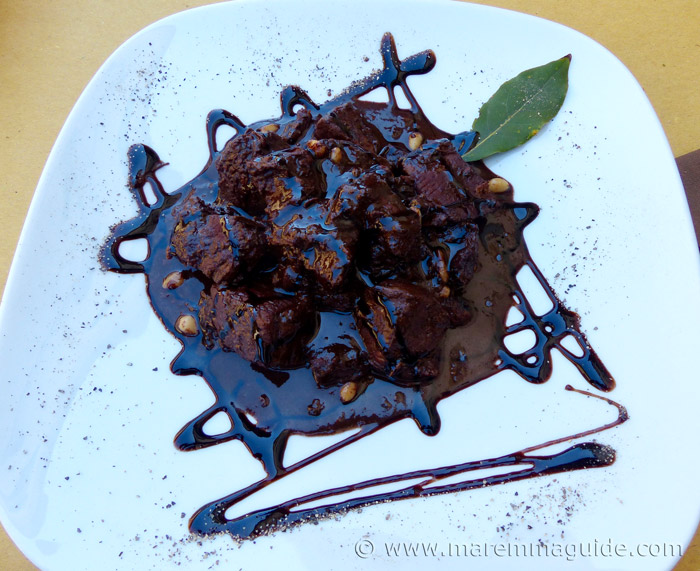
Explore some more...
- Take your own wild boar pictures in Maremma.
With thanks for these wild boar facts to Wikipedia, the free encyclopedia. These wild boar facts have been compiled from the information for "cinghiale" within the Italian version of Wikipedia, the free encyclopedia.
